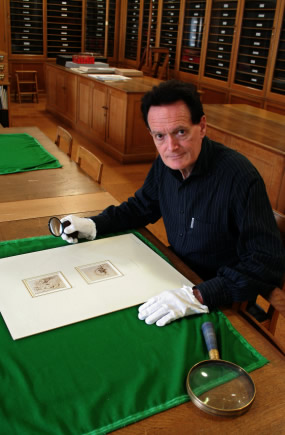Tuesday August 30 – 12.10-13.00 hrs – Aula Magna
|
|
Martin KempEmeritus Professor
|
Leonardo in motion
.
Abstract:
Since 1980, Martin Kemp has been involved in various schemes to use computer animations as a way of understanding and presenting Leonardo’s ideas in art, science and engineering. The current project involves the creation of a website on the Codex Leicester, owned by Bill Gates. There are three main reasons for getting Leonardo’s drawings to move:
1) animating a design demands a deep understanding of it;
2) Leonardo would have loved his drawings to move, as is clear from his graphic techniques;
3) motion greatly enhances the observers’ ability to understand what is happening in his spatially dynamic designs.
.
.
Martin Kemp biosketch:
Martin Kemp was trained in Natural Sciences and
Art History at Cambridge University and the Courtauld Institute,
London. He was British Academy Wolfson Research Professor (1993-98).
For more than 25 years he was based in Scotland (Universities of
Glasgow and St. Andrews. He has held visiting posts in Princeton, New
York, North Carolina, Los Angeles, Montreal and Harvard (I Tatti).
He has written, broadcast and curated exhibitions on imagery in art and
science from the Renaissance to the present day. Books include, The Science of Art. Optical Themes in Western Art from Brunelleschi to Seurat (Yale University Press), and The Human Animal in Western Art and Science (Chicago 2007). He has published extensively on Leonardo da Vinci, including the prize-winning Leonardo da Vinci. The marvellous works of nature and man (1989 and 2006). His book on the portrait La Bella Principessa, written with Pascal Cotte, is published by Hodder and Stoughton.
He has curated and co-curated a series of exhibitions on Leonardo and other themes, including Spectacular Bodies at the Hayward Gallery in London and Leonardo da Vinci. Experience, Experiment, Design at the Victoria and Albert Museum in 2006 and Seduced. Sex and Art from Antiquity to Now, Barbican Art Gallery London, 2007. He was also guest curator for Ca 1492 at the National Gallery in Washington in 1992.
Increasingly, he has focused on issues of visualisation, modelling and representation. He writes a regular column Nature (published as Visualisations, OUP, 2000 and developed as Seen and Unseen, OUP 2006, in which his concept of “structural intuitions” is explored). His next book Christ to Coke – How image becomes icon will be published by OUP this autumn.
